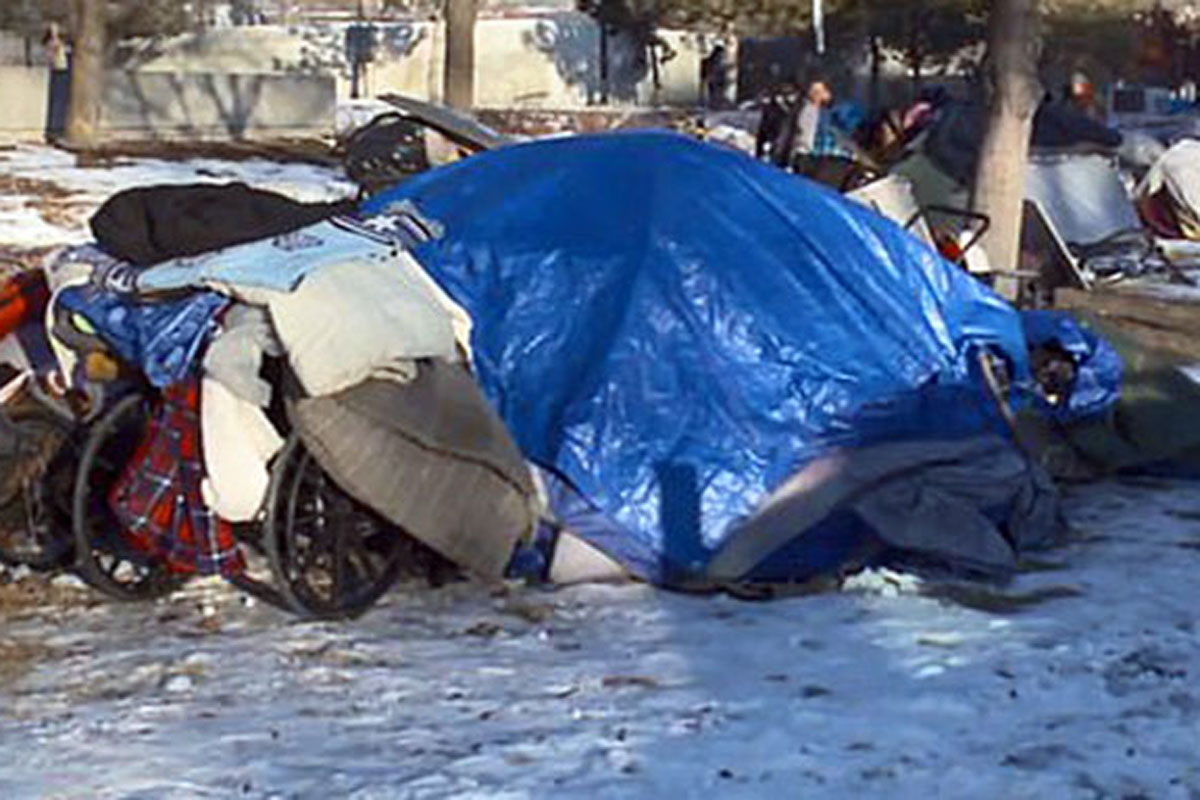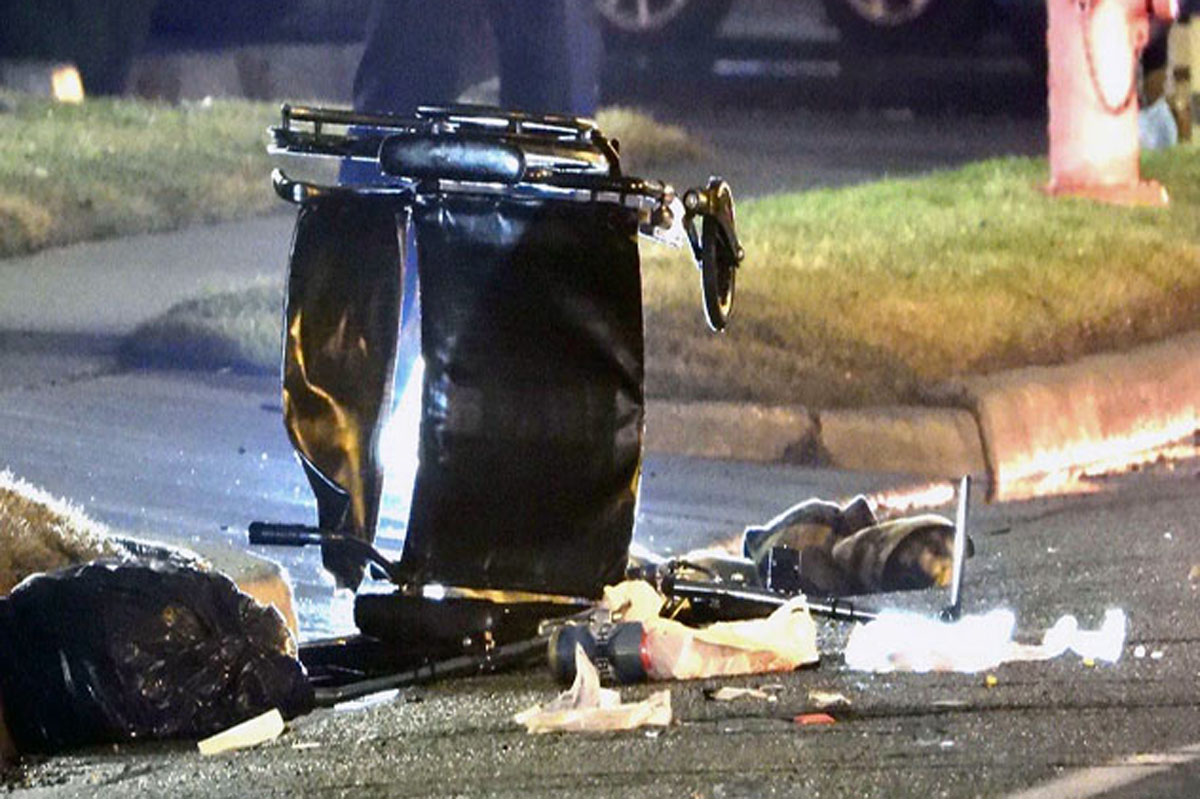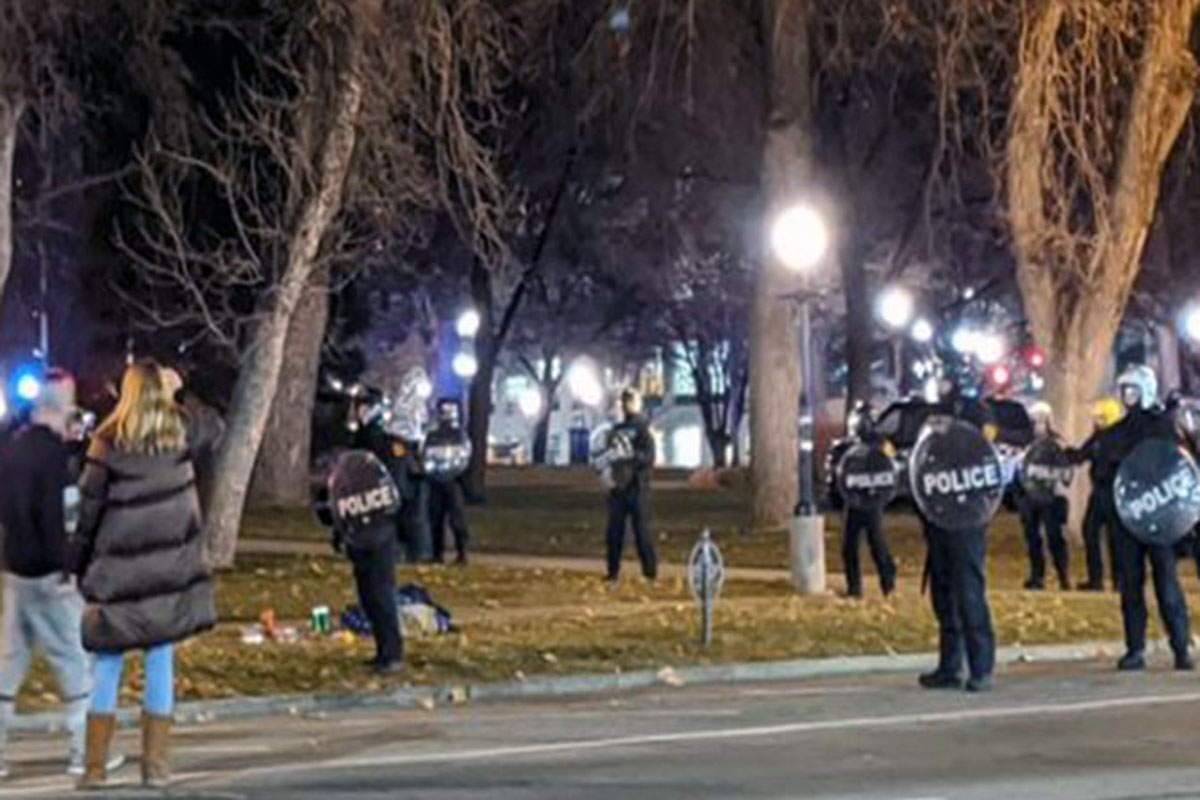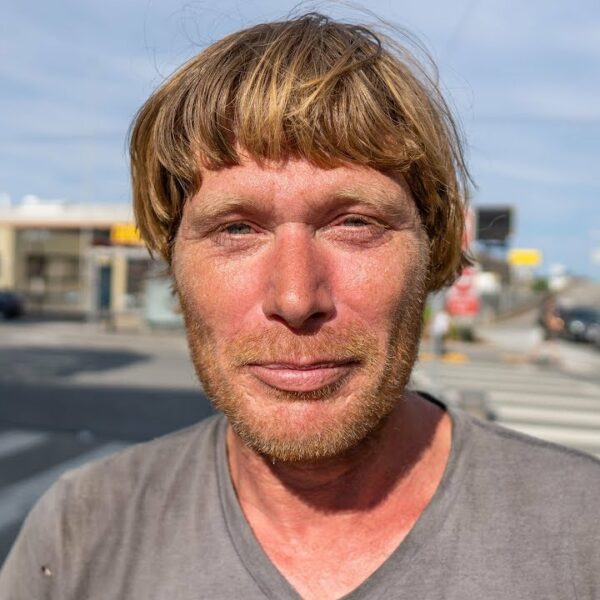When Vestar acquired Utah’s Gateway shopping mall in 2016, it kicked off a homeless relocation plan.
A multibillion dollar real-estate corporation, Vestar had ambitious plans for the shopping mall and the surrounding area, which included an eight-story luxury hotel.
Originally costing $375 million, the mall has a prestigious location. It’s just across the street to the west from the Vivint Smart Home arena, home of Utah’s NBA team the Jazz. Bracketed on two sides by commuter train platforms, it’s also just two blocks from Salt Lake’s largest ground transportation hub and just 10 minutes away from the airport.
Directly across the street from all this was Salt Lake City’s homeless shelter.
Crime statistics clearly showed shelter residents rarely impacted the Gateway. However, it didn’t take much of an analyst to figure out the ground beneath their feet was becoming too valuable to countenance their continued presence.
There was money to be made, lots of it, and homeless people were in the way.
There had been talk about retiring the downtown shelter before. After Vestar’s ambitious plans for the Gateway area began to be implemented, things moved more quickly. In October 2016, the first plan was announced and included replacing the shelter with four smaller facilities. Of course, the plan for four eventually became three.
In early 2017, 300 new jail beds were established for something called “Operation Rio Grande.” The homeless shelter and its environs were literally surrounded by state police. An entire street was fenced off and a large part of the block in front of the shelter was fenced in and covered. The place began to resemble a prison.
Arrests and ticketing soared.
This further stigmatized and vilified homeless people, not to mention making it harder to find apartments and jobs. The police bragged about the reduction of crime, specifically drug dealing and the sale of stolen goods. In reality, all the heavy police presence accomplished was to push those crimes inside the shelter, where they disrupted sleep and victimized homeless people who wanted no part of it. In a state where a person struggling with addiction must wait up to nine months to get into a treatment facility, addiction rates are climbing. After all, a drug dealer is going to do what drug dealers do.
Someday, hopefully soon, elected officials will realize you cannot police people sober any more than you can police people sane. Perhaps the treatment bed should be just as available as a jail bed – better yet more available!
By late 2018, the newly revamped Gateway was one of the most spectacular malls in America.
It had working fire pits surrounded by real wood furniture. There was a world-class planetarium, high-end restaurants, comedy clubs, gorgeous illuminated landscaping and mist sprayers to cool off visitors in summer. On three sides, high-end condominiums and apartment complexes surrounded the location along with acres for the “Silicon Slope” Tech giants south of Salt Lake. Glittery new sports cars and luxury sedans traveled by the shelter.
Meanwhile, the three new facilities were nearing completion far from the downtown area. The plan was clearly an attempt to hide homeless people from areas slated for these lavish new developments. There was one shelter for men, one for women, and a coed shelter for homeless people with special needs. This being Utah, the men were separated from the women by six miles.
The new facilities, called “Resource Centers” instead of shelters, had a combined capacity of only 700 people, 400 less than the shelter being replaced. In addition, none of the resource centers would allow overflow or mats on the floor. As the old shelter was over capacity every winter, one has to wonder where all those people would go. The proponents and architects of this plan insisted that it made sense despite the obvious numeric disparity. They reasoned that the new resource centers were designed to be more successful at getting people into housing.

Salt Lake City has an embarrassing number of deaths among homeless people by way of “exposure” (freezing to death). In the last three years, Utah had 339 deaths among homeless people. So, 400 fewer beds made no sense. Every time homeless people are “found unresponsive” after a brutally cold night, politicians make all the right noises. However, positive change fails to materialize. Instead, we get short-sighted plans like this one.
Volunteers of America, Catholic Community Services and The Road Home conducted a careful analysis of their needs for the new facilities.
They stated they needed $40 million to succeed in their mission to reduce the homeless population. That money would pay for case managers, counselors, housing locators, medical providers, meal provisions and general staff. But, acting true to form, Lt. Governor Spencer J. Cox and his legislative committee on homeless people approved only $17 million, going so far as to slash $500,000 from current spending levels for palliative (end of life) care for homeless people. This cut came despite the fact Utah has $682 million in surplus state revenue.
The message was immediately clear: out of sight, out of mind, out of money. It’s no surprise that after only 5 months of operation, Catholic Community Services is walking away. They gave notice of their intent to exit their contract. No word yet as to what organization, if any, will step in and try to do the impossible. That leaves the frightening possibility that the individuals served will soon have no shelter at all. This news comes just as the old shelter is being torn down to make way for new development.
It’s no surprise when the plan to displace homeless people went into full effect, it backfired in spectacular fashion.
The first new resource center, the one for just women, opened to great fanfare in August of 2019. Less than two months after opening, it began turning people away. The second center was over capacity before it even opened. And, as the date approached for the downtown shelter’s closure, there were close to 400 men in residence. The last resource center to open, the one for the men, had only 300 beds. That occupancy limit, like the limit at all of the new facilities, was set in stone and couldn’t be exceeded.
The math was alarming. When the time came, many of the men just wouldn’t go to the new center. Instead, they choose to camp in parks closer to downtown.
It isn’t hard to see why many of the men wouldn’t go. The men’s resource center is more than eight miles from Salt Lake City. That’s an awfully long way to go if you have a job, or to reach needed resources available downtown. Some men had a spouse or significant other among the women’s population. Not to mention the new resource center is located next to the county jail – and some people didn’t want to live right next door.
There were other problems with the men’s center as well. The facility was located on a small spur road just off a busy highway. The spur was specifically designed to be too narrow to allow any of the homeless men to have cars. “No Parking” signs were posted all along the spur and the one parking lot for the facility was gated off. This seemed pointlessly cruel. What if a homeless man needed a car for work?
It gets worse.
Between Nov. 26 and Jan. 3, four men were hit by vehicles trying to cross the busy six-lane highway. They were trying to access the spur road where the new center is located. Three of the men were killed.

None of the drivers were cited. After all, I guess, these were just homeless men. One of the men killed, a 43-year-old man in a wheelchair, was hit by a pickup on Christmas day. He lingered for four days before dying.
And it gets even worse.
It turns out that there was actually a crosswalk painted before these three fatalities occurred. However, the Utah Department of Transportation demanded that it be removed because “they needed to do a study” before putting in a crosswalk.
Following the deaths of the three homeless men and the resultant outcry, the Department of Transportation quickly backtracked and planned to replace the crosswalk. I guess three fatalities in just over five weeks is study enough. The new crosswalk will have flashing lights and little orange flags now, so I guess that makes it all better.
Meanwhile, the men camping downtown had been joined by the displaced women.
The resulting encampments began to bring predictable consternation among some of the populace. This was followed shortly by equally predictable police harassment against homeless people to try and get them to somehow vanish. Brutal police sweeps were conducted and clothes, tents, sleeping bags, backpacks, carts and other belongings were taken and discarded. Tickets were issued in the hundreds and tempers flared on every side of the issue. The ACLU protested that the civil rights of homeless people were being violated, which of course, they were.
By this time, winter had set in. All of the new resource centers really were full, regardless of the city’s protestations to the contrary. Temperatures plummeted and the first snows arrived as demonstrations were held to protest the increasingly harsh treatment of homeless people. By the end of December, there were more than 100 campers in four parks and other areas. Of course, the jail was full to overflowing, too.

The situation came to an ugly climax on Jan. 4. Protesters camped out with homeless people in Washington Square Park, across from the county courthouse, to make a statement. True to form, the Salt Lake City police force showed up in full riot gear, shields and clubs ready. A shoving match ensued which culminated in 17 arrests. The protesters presented a list of demands including opening a new shelter, free transportation for homeless people and a cessation of harassment ticketing.
Astonishingly, it worked. Sort of.
Twelve days after the protest, Salt Lake City’s new Mayor Erin Mendenhall cried uncle and acquiesced to the protesters’ primary demands. She announced a commercial building in the Sugarhouse area (closer to the city) would house a new shelter. The empty building was quickly set up to sleep 145 people and has a shuttle to the downtown area.
The new shelter is supposed to be temporary, with a closure date set for April 15. This clearly shows we still have elected Utah officials who are seemingly obtuse enough to view Utah’s homeless situation as temporary.
A Social Embarrassment
Utah has a particular conservative mindset seemingly committed to encouraging the ongoing moral crimes of bigotry and discrimination. This is especially true with regard to homeless people, who are disproportionately represented by minorities and people from the LGBT community. With conservative media providing a plethora of daily hit pieces that infuriate some of our less enlightened residents, it’s only getting worse. This makes real progress in the area of affordable housing almost negligible, as recent news reports clearly show.
Progress in the areas of accessible mental health, adequate medical coverage, fair wages and a less draconian criminal justice system are likewise routinely stymied. As a result, Utah continues to be a social embarrassment leading the nation in anti-depression prescriptions (1st), nearly leading the nation in suicides per capita (5th) and ranking last in terms of overall mental health.
Many here are in danger of becoming homeless, whether they admit it or not. Here in Salt Lake City the median per capita income is $28,428, around $23k after taxes. Now, the average apartment rent here is $1,245, or $14,940 a year. This leaves just over $600 a month to pay for remaining bills, food, transportation, insurance and medical expenses. That doesn’t even factor in children or pets.
So, people stay with their family too long … or they bunch up in roommate situations or stay in failed or abusive relationships just to make the rent.
ALL of these people are vulnerable. And once homeless, it’s a long, brutally difficult climb back to being housed again. I know, as my wife and I are still in the struggle.
Utah’s plan to hide homeless people from downtown gentrification has backfired in such a spectacular fashion that it could be used as a textbook example of what NOT to do.
You can’t just make people disappear, it doesn’t work. Replacing 1,100 beds with 700 doesn’t work. Coming up with a new plan and then refusing to fund it doesn’t work. Homelessness can’t be policed away. It can’t be bullied away. And it can’t be ignored. People need to breathe, sleep, and find food and warmth. Those needs aren’t crimes.
I know from experience that many of the homeless are easily the most empathetic, compassionate and gentle people one could ever meet.
Some, like me, had college degrees. I even met a former attorney who had been disbarred and has since struggled with crippling depression. I met a linguistic polyglot who was fluent in five different languages. He has Autistic Spectrum Disorder like me, but hasn’t been able to overcome his social difficulties. One man had been a successful chemical engineer until he backed over his 3-year-old daughter in the driveway. Another was a former tree surgeon who had lost his entire family including his dog to a drunk driver. These are people who could recover with the right kind of help.
I can only hope that Utah learns from this poorly planned and horribly implemented experiment. It cost lives, and it shouldn’t have.
There’s just no other way to say it. It cost lives. And it was all for a damn piece of land.












